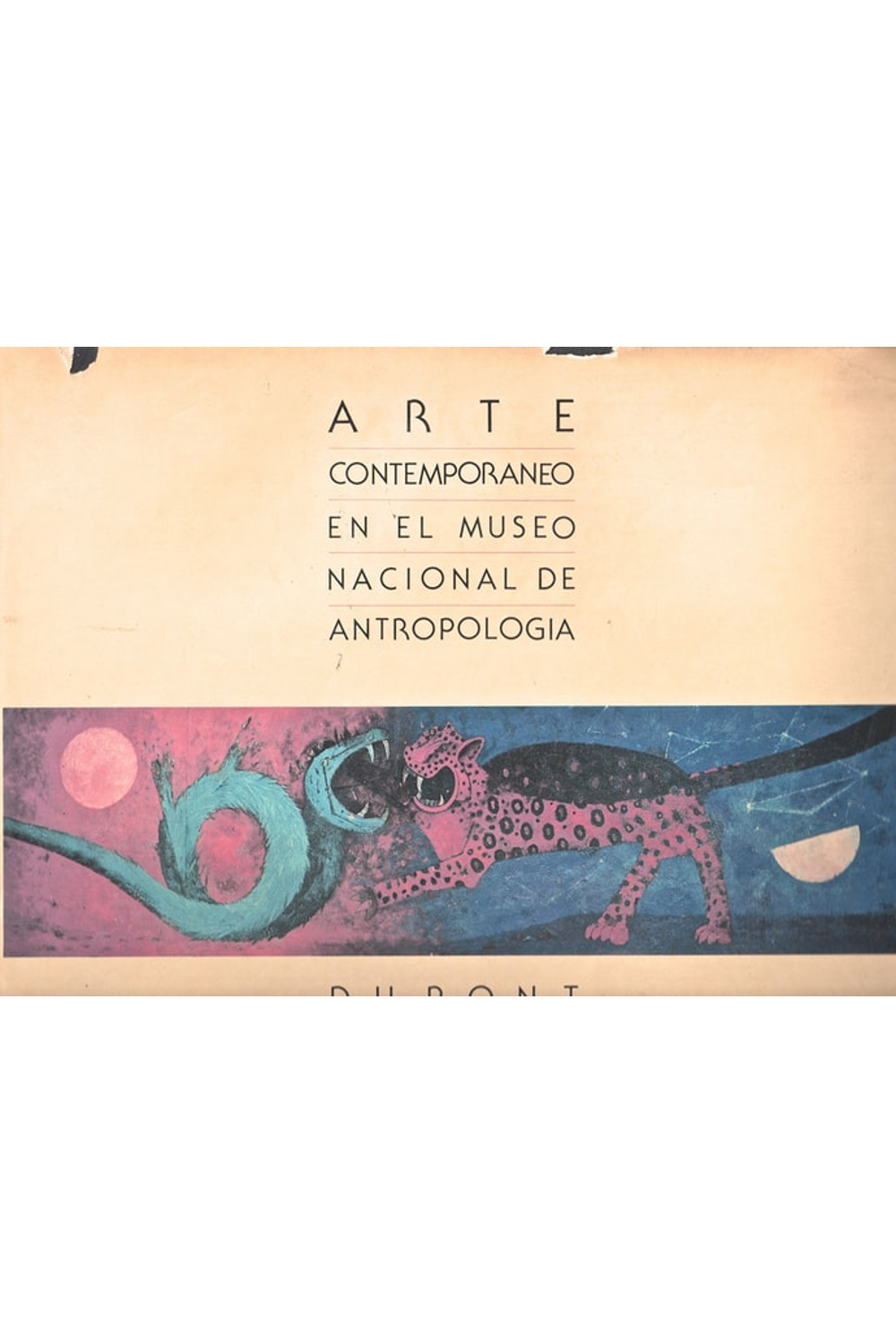Discover a unique dialogue between ancient civilizations and contemporary art in “Arte Contemporaneo En El Museo Nacional De Antropologia” by Alfonso De Neuvillate. This rare 1985 hardcover edition explores the groundbreaking curatorial experiment of placing modern artworks within Mexico’s National Museum of Anthropology. Delve into a visual and intellectual journey examining how artists of the late 20th century engaged with Mexico’s rich pre-Columbian heritage. While details on featured artists are limited online, this book offers invaluable insight into the conceptual framework that linked modern art with ancestral artifacts. A compelling resource for art historians, anthropologists, and collectors interested in the intersection of modern art and ancient Mexican culture. Published by Dupont, this 95-page book offers a thought-provoking commentary through photographs and text.
Arte Contemporaneo En El Museo Nacional De Antropologia
14,16 $
In stock
Discover a fascinating intersection of modern art and ancient cultures in “Arte Contemporaneo En El Museo Nacional De Antropologia” by Alfonso De Neuvillate. This unique hardcover book, published in 1985, offers a compelling exploration of how contemporary artistic expressions resonate within the hallowed halls of Mexico’s National Museum of Anthropology. De Neuvillate masterfully guides the reader through a carefully curated selection of artworks, illuminating the dialogue between the museum’s pre-Columbian artifacts and the modern pieces strategically placed alongside them. The book isn’t simply a catalog; it’s a thoughtful commentary on the enduring power of indigenous art and its influence on contemporary artists. It challenges viewers to reconsider their understanding of both the ancient world and the art of the late 20th century. While specific details about the artists featured within the book are scarce online (likely due to its age and relative obscurity), its significance lies in its conceptual approach. De Neuvillate, an expert in the field, showcases how placing modern art within this specific anthropological context creates a powerful dynamic. The juxtaposition invites contemplation on themes of identity, cultural memory, continuity, and the evolving relationship between humanity and its heritage. Imagine strolling through the Museo Nacional de Antropologa and encountering a striking modern sculpture strategically positioned near an Olmec head or a Mayan stela. This book captures that experience, providing insight into the curatorial decisions that aimed to forge connections between different artistic eras and cultural perspectives. It provides the reader a guided tour of this artistic conversation, exploring how modern artists respond to and reinterpret the legacy of Mexico’s rich pre-Columbian past. This first edition, published by Dupont, comprises 95 pages and weighs approximately 800 grams. Although the text is in English, the book is heavily visually driven, using photographs to showcase the selected artworks within the museum environment. The images, crucial to the book’s argument, highlight the visual interplay and the conceptual relationships between the ancient and modern art forms. “Arte Contemporaneo En El Museo Nacional De Antropologia” is more than just a book; it’s a window into a specific moment in time the 1980s when curators were actively experimenting with new ways of presenting art and culture. It is an invaluable resource for art historians, anthropologists, museum studies students, and anyone interested in the intersection of modern art and pre-Columbian cultures. It’s also a unique piece for collectors interested in specialized and somewhat obscure titles relating to Mexican art history. This is a rare opportunity to own a thought-provoking piece of art historical discourse.
| Authors | |
|---|---|
| Binding | |
| Condition | |
| ISBN-10 | 9686123008 |
| ISBN-13 | 9789686123005 |
| Language | |
| Pages | 95 |
| Publisher | |
| Year published | |
| Weight | 800 |
| Edition | 1 |
| Dewey decimal | 700.972 |
Related products
-
Mark Wallinger
38,21 $ -
Art and Politics Now
28,01 $
- Additional information
- Currencies
- USD – United States dollar
- EUR – Euro
- GBP – Pound sterling
- CNY – Chinese yuan
- BRL – Brazilian real
- MXN – Mexican peso
- JPY – Japanese yen
- PHP – Philippine peso
- THB – Thai baht
- PLN – Polish złoty
- CAD – Canadian dollar
- MYR – Malaysian ringgit
- AUD – Australian dollar
- TWD – New Taiwan dollar
- CZK – Czech koruna
- SEK – Swedish krona
- HUF – Hungarian forint
- ILS – Israeli new shekel
- CHF – Swiss franc
- HKD – Hong Kong dollar
- DKK – Danish krone
- SGD – Singapore dollar
- NOK – Norwegian krone
- NZD – New Zealand dollar




